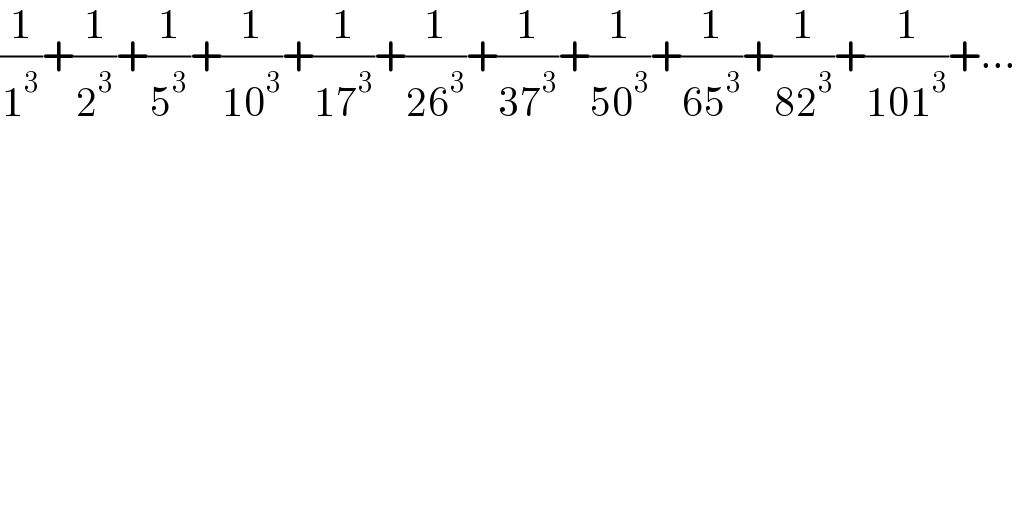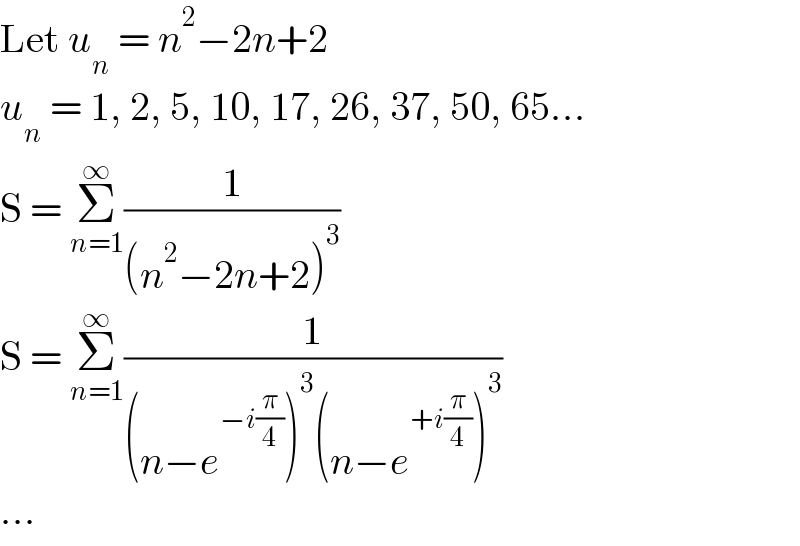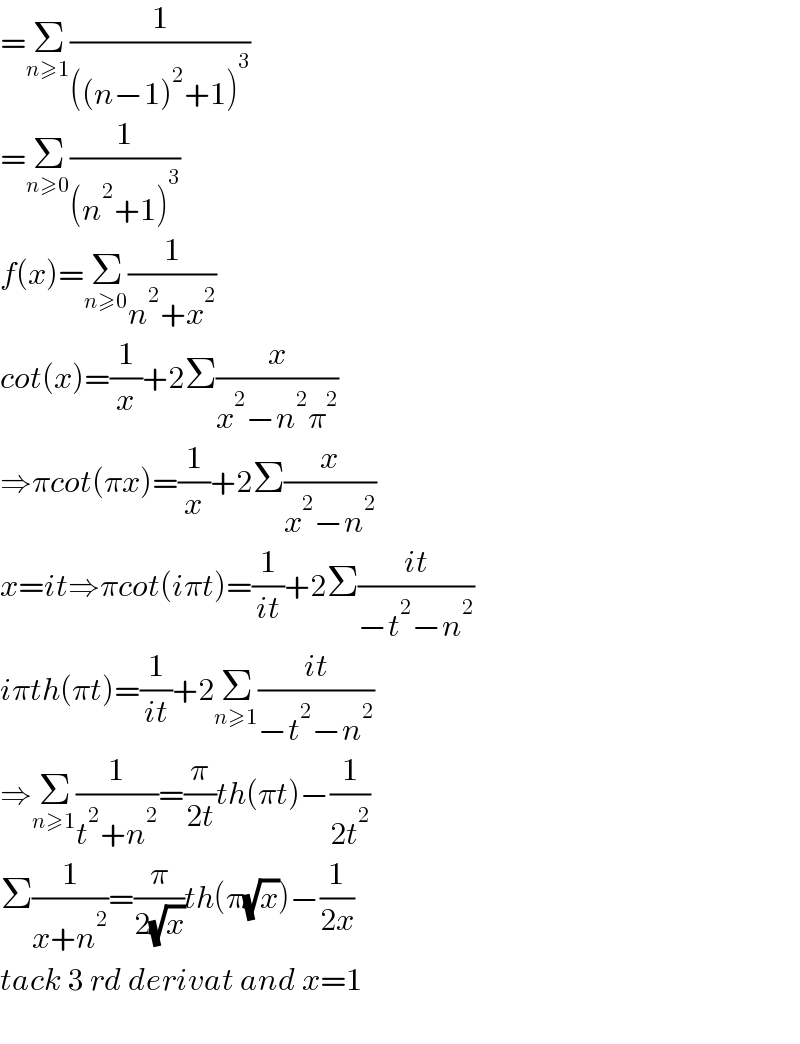
Question and Answers Forum
Question Number 131795 by Dwaipayan Shikari last updated on 08/Feb/21

Answered by Olaf last updated on 08/Feb/21

Commented by mindispower last updated on 08/Feb/21

Commented by Dwaipayan Shikari last updated on 08/Feb/21

Commented by mindispower last updated on 09/Feb/21

